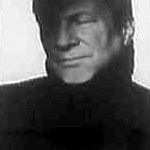Zazie dans le Metro/1960/NEF, Pathé/89 min.
Criterion is rereleasing ‘Zazie’ and while it really isn’t noir I couldn’t resist running this review from critic Michael Wilmington. The heroine is a tough little girl, director Louis Malle was a skilled noir storyteller (“Elevator to the Gallows” from 1958) and I still have Paris on the brain.
An impish little girl named Zazie with pre-Beatle bangs, an unusually profane vocabulary and a seemingly endless sense of adventure travels to Paris on the train with her mother (Odette Piquet). Once they hit Paris, her maman departs with her lover and leaves Zazie – a 12-year-old French gamine (played by the delightfully brash Catherine Demongeot) – to spend the day with her obliging, free-spirited Uncle Gabriel (Philippe Noiret). Zazie, tiny but indomitable, has a startling lack of reliance on adults, and that’s probably all to the good, since, as a babysitter, Gabriel seems initially a big fat fish out of water.
Oncle Gabriel, in fact, is a drag entertainer at a local restaurant-cabaret, where his size and manner recall that classic description of Oliver Hardy: “elephant on tippy-toe.” And Zazie keeps calling her uncle a “hormosessual,” even though the tart-tongued Gabriel is married to a loving wife named Albertine (Carla Marlier), who has the sweetest of dispositions and the looks of a movie star. But apparently, a “hormosessual” he is.
With or without Gabriel, Zazie has one big wish for her Parisian trip: She wants to ride on the Paris Metro. But the metro is on strike, and the subway gates are locked, so Zazie has to be content, for a while, with zipping around town in a taxicab with Gabriel and an exuberant driver (Antoine Roblot), who cheerfully misidentifies landmarks (The Church of St. Vincent de Paul becomes the Pantheon) and keeps getting caught in the traffic jams that the metro strike has caused.
Soon, however, Zazie breaks away and spends the day racing through the City of Light, picking up all sorts of strange new friends and enemies. In the course of Zazie’s spree, she turns Paris into a huge playground and the Eiffel Tower, in one astonishing scene, into the ultimate jungle gym. At the end, we see what looks like the beginning of a café revolution (Malle was ever the gentleman leftist).
“Zazie dans le Metro” was the movie that made Noiret a star – beginning a brilliant half-century film career and striking a blow for all those great movie actors who don’t look like Alain Delon. The film didn’t make a star of Demongeot. She acted in only three more films, and one of them was a cameo as Zazie, for Jean-Luc Godard‘s “A Woman is a Woman.” But it gave her something more precious: It made her immortal.
Malle too, maybe – along with his more conventional masterpieces “Le Feu Follet,” “Lacombe, Lucien” and “Au Revoir, les Enfants.” “Zazie dans le Metro” was his third feature film – the fourth, if you include his co-directing on Jacques Cousteau’s Cannes Film Festival Palme d’Or-winning underwater documentary “The Silent World” (1956). “Zazie,” shot in color, was a departure from Malle’s two 1958 black-and-white films with Jeanne Moreau: the noir thriller “Elevator to the Gallows” and the erotic drama “The Lovers.”
“Zazie” is arguably just as influential on free-wheeling ’60s cinema as Godard’s “Breathless.” It’s all there: photo-kaleidoscopic color, free-spirited youngsters and oddballs racing around a great city, sped-up photography, irreverent taboo-shattering humor, playful revolutionary politics and playful sexuality, inside gags and pop culture references and allusions galore – everything, in fact, but a rock sound track. (Instead Malle, who had hired Miles Davis to write the music for “Elevator to the Gallows,” uses cool jazz and a sprightly score by Florenzo Carpi.)
The movie, whose throwaway charm is far more calculated than it seems, is based on one of the major French literary classics of the 20th century: Raymond Queneau’s novel of the same name, which scholar Ginette Vincendeau describes in the Criterion “Zazie” booklet as “the funniest book ever written in, or about, the French language.”
Queneau, a one-time surrealist and member of the French literary elite, combined almost Joycean wordplay with a radical spirit and outrageous comedy to produce a writerly book that became both massively popular and a cognoscenti treat. Malle and his excellent co-scenarist, Jean-Paul Rappeneau (who later directed Gerard Depardieu in “Cyrano de Bergerac”), took that classic and replaced most of the wordplay with cinema-play. Wonderfully, exuberantly!
What Malle got was one of the great Paris location movies of all time. It’s a film that divided critics but has remained popular and a true cult film to this day. One Parisian theatre played it once a week for twenty years. And, for my entire life, I’ve run into Zazie buffs – somewhat rebellious, smart, full of life and high spirits, often with a smile on their faces that’s a bit like Demongeot’s – who say “Did you ever see ‘Zazie dans le Metro’? What a film!”
Extras: Interviews with Malle, Queneau, Rappeneau, William Klein and Demongeot; 2005 video piece “Le Paris du Zazie”; Trailer; Booklet with essay by Ginette Vincendeau.











From FNB readers